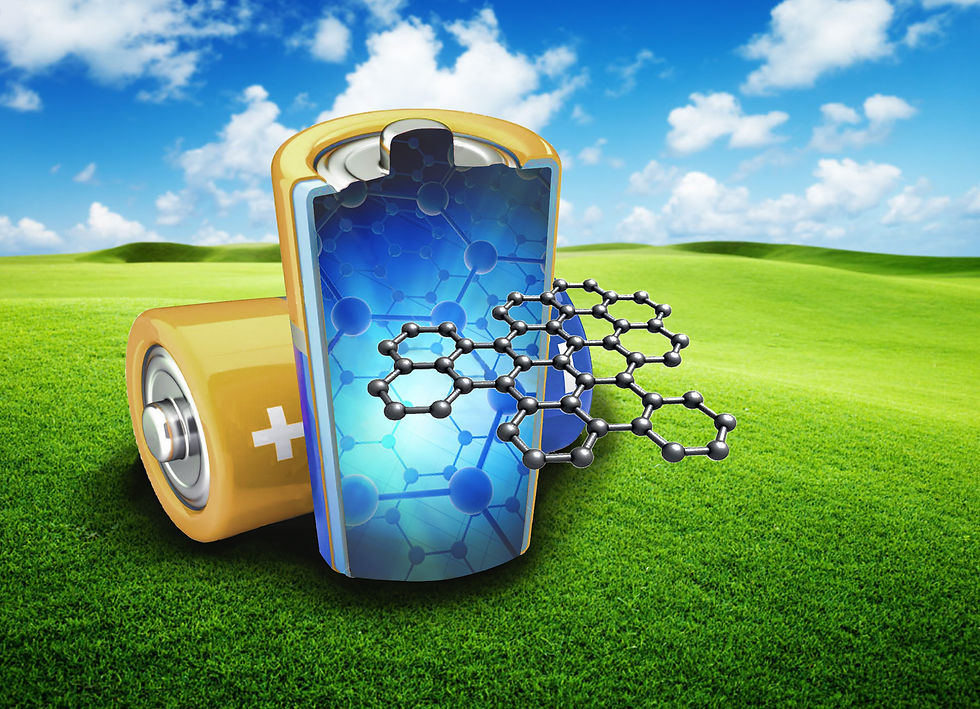
RESEARCH
Our research at UCLA focuses on the preparation and implementation of new materials with interesting and potentially useful physical characteristics, including optical, structural, catalytic and electrochemical properties. This involves the characterization, processing, and molecular-level understanding of these materials for the development of more effective energy storage devices, solar cells, chemical sensors, artificial photosynthesis, as well as flexible and printed electronics. Central to our work is the application of chemical principles and techniques to enhance materials processing and manufacturing methods.
In recent years, our research scope has expanded to encompass emerging areas such as skin electronics, energy harvesting nanogenerators, and implantable batteries and supercapacitors. We pursue these research interests by exploring new materials including inorganic and organic semiconductors, 1D and 2D materials, carbon nanodots, and proteins along with a completely new class of metal oxides that are cross-linked at the molecular level with boron clusters.
Below are some stories of our research discoveries in recent years. They also include a description of current research projects:
Supercapacitors
Electrochemical capacitors, also known as supercapacitors, are energy storage devices like batteries, yet they can be recharged a hundred to a thousand times faster. Because of their enabling features, supercapacitors complement or even replace batteries in an increasing number of applications. However, the low energy density of the current supercapacitors is the main impediment to realizing the full commercial potential of this technology. In order to address these challenges, we are exploring new materials and device structures for the production of supercapacitors with the goal of achieving the energy-storage capability of batteries without sacrificing their power density and cycling life.
For example, we used a consumer-grade LightScribe DVD burner for the direct writing of graphene films that can be used directly in supercapacitors without the need for binders or conductive additives generally used in conventional supercapacitors. A good way to understand our technology is to view a three-minute video made for the Sundance film festival by the videographer Brian Davis on ideas that could change the world [link]. Following this discovery, our team has received hundreds of inquiries about using the new graphene supercapacitors for storing energy in everything from portable electronic devices to power plants based on solar energy and even hybrid electric vehicles.
We are also developing organic and inorganic nanomaterials to address critical performance parameters related to energy storage including energy density, power density, safety, and cost.



Next-Generation Batteries
Batteries play a crucial role in our daily lives, powering portable electronics and electric vehicles. However, they also pose challenges including finite resources, environmental impact, overheating and safety concerns. Our research group focuses on advancing the safety and performance of lithium-ion batteries. Through innovative materials and designs, we strive to enhance their safety, efficiency, and lifespan, ensuring their widespread adoption across various applications.
Beyond lithium-ion batteries, we explore alternative chemistries that utilize more abundant materials such as sodium and zinc. Zinc, in particular, is approximately 100 times more abundant than lithium, and manufacturing zinc-ion batteries significantly reduces greenhouse gas emissions. These batteries offer high energy density, extended cycle life, and tap into abundant zinc resources, making them attractive for sustainable energy storage. Our research is dedicated to optimizing the performance and stability of zinc-ion and zinc-air batteries, enabling their practical implementation across industries. Through cutting-edge materials synthesis, battery design, and electrochemical characterization, we strive to push the boundaries of battery technology. Collaborating with industry partners and academic institutions, we translate our findings into real-world applications, contributing to the advancement of clean energy solutions. Our work aims to pave the way for a more sustainable and efficient future of energy storage.



Graphene & 2D Materials
Our team made some notable contributions to the chemistry of graphene oxide, leading to new forms of graphene with unique electronic and structural properties that are desirable for many applications. In addition, we demonstrated a direct laser writing technique for patterning graphene precisely without using masks or expensive cleanroom operations, which obviates the need for time-consuming and labor-intensive lithographic techniques. This process has been implemented by our group at UCLA and other groups throughout the world for the development of various electronic devices including microscale batteries and supercapacitors, sensors and biosensors, transistors, electrocatalysis, LEDs, artificial throats, earphones, loudspeakers, photodetectors, actuators, soft electroactive devices, and biomedical devices (micro-patterned in vitro neural networks).
Other 2D materials of interest are transition metal dichalcogenides TMDCs, hexagonal boron nitrides hBN, and metal-organic frameworks MOFs. For example, we have recently utilized the tunable optical and electronic properties of the 2D TMDC MoO3-x for the fabrication of transparent and electrochromic energy storage devices.



Nanogenerators
To meet the future need for clean and sustainable energies, there has been considerable interest in the development of nanogenerators (NGs) that scavenge waste mechanical energies. Working with an international team from Canada and the US, our team at UCLA developed a new class of fire-resistant and self-powered sensors for lifesaving applications. This system can be integrated into wearables to ensure greater safety in a world where flammable materials are being increasingly used and where protection against fire remains an issue. In another project, we developed a new NG that creates electricity from snowfall. This wearable device can function as a stretchable energy harvester and a multifunctional sensor for monitoring weather in remote areas. The team has also developed an effective strategy for harvesting the energy of underwater currents with an innovative design of self-standing TENGs. The harvested power is utilized to power pH and turbidity sensors for environmental monitoring of oceanic waters. We are also investigating the performance of TENGs under low-frequency range and planning to understand how they are different from those of piezoelectric devices


Skin Electronics
Once the stuff of science fiction, the electronic skin is becoming a reality thanks to significant advances in innovative materials, microelectronics, and sensors. Great efforts are currently underway to develop an electronic skin that is flexible, stretchable and self-healing, that can mimic the functionalities of the human skin. Working with a team from the University of Toronto, we used a simple printing technique for fabricating an electronic skin that is capable of detecting human physiological signals such as pressure, temperature, and humidity through an array of self-powered and totally flat sensors. The new devices can mimic the skin’s ability to breathe and flex, while also provide new features such as being conformable, anti-inflammatory, and recyclable and can degrade under ambient conditions without the need for water or bio-fluids.


Chemical Sensors, Biosensors & Drug Delivery
Our team uses unique nonmanufacturing tools for the development of novel medical devices for the biomedical industry. Specifically, we are interested in applications such as targeted drug delivery, cellular imaging, healthcare monitoring, and smart biomedical devices. Another subject of interest to us is chemical sensors and biosensors for the precise measurement of the human body’s chemical messengers – neurotransmitters such as dopamine, epinephrine, and L-Dopa, etc.
Delivering medicine to the site of therapeutic action remain a challenge in the pharmaceutical and medical industry. We are interested in the development of potent drug delivery systems based on drug-loaded nanoparticles that can bind selectively to cancer cells with the help of the proper targeting ligand, allowing for the treatment of those cells without damaging the normal cells in the body. For example, we have recently demonstrated a green route for the preparation of nanodevices consisting of bright-blue emitting cadmium nanoclusters as an effective delivery vehicle and bio-imaging probe, hyaluronic acid as a targeting ligand, and doxorubicin as a model anticancer drug. This platform exhibits strong and efficient therapeutic activities combined with the pH-controllable release of doxorubicin that reaches the tumor with high cellular uptake. In addition, the nanoclusters are well below 5 nm in size, enabling the successful renal filtration of the proposed drug delivery and cellular imaging system.



Water Splitting and Hydrogen Energy
Solar energy is the only renewable energy source with the capacity to completely satisfy the projected energy consumption of our planet over the next century. The development of stable and efficient material systems that can store the energy in sunlight by splitting water into hydrogen and oxygen has been considered for decades as one of the “Holy Grails” of science and technology. In our efforts to create a fully integrated water splitting device, we use the principles of semiconductor physics combined with those of electrocatalysis.
We have recently proposed and demonstrated an integrated dual-function energy device for both electrochemical energy storage and catalytic water splitting. The integrated device uses earth-abundant metals, offering an entirely new and low-cost solution to capture, store and harness energy for the world’s growing population.



Journal Covers









